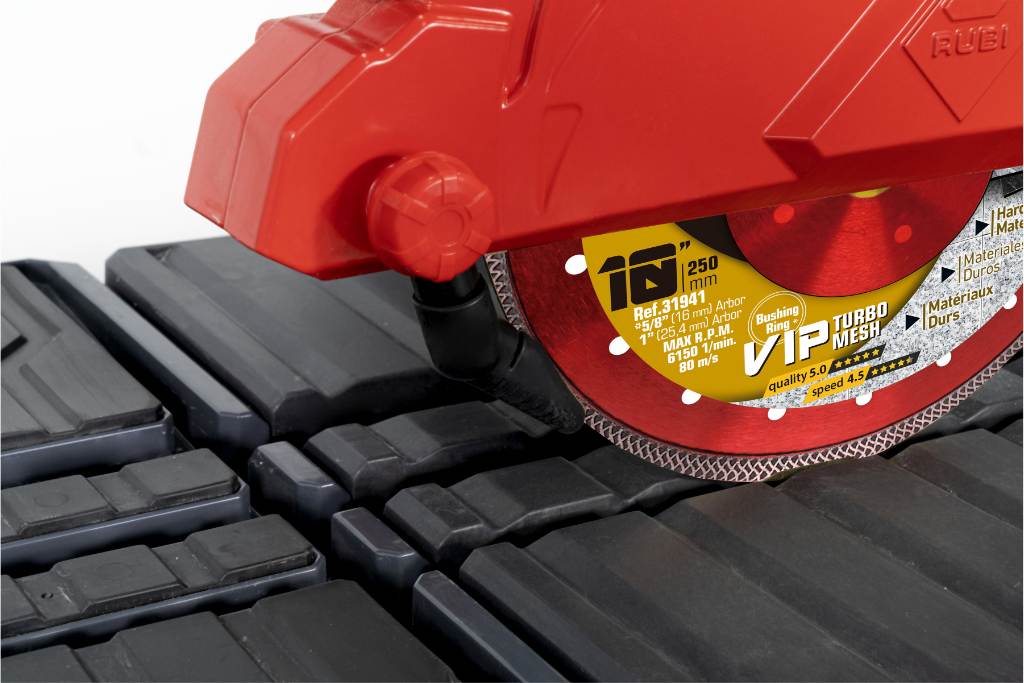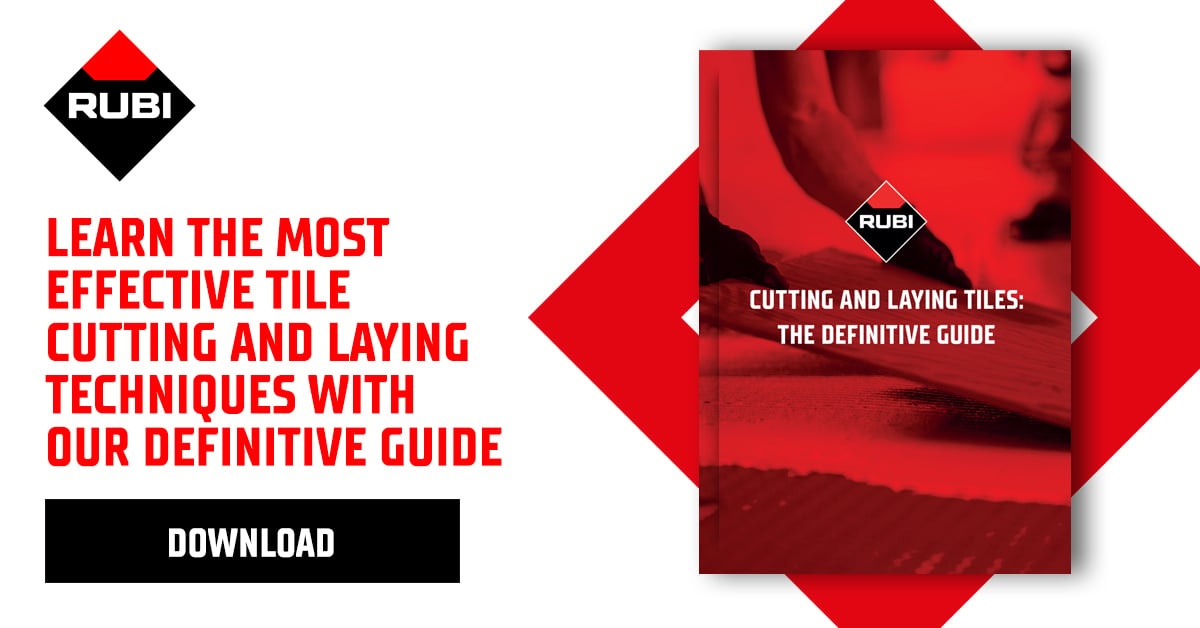A report from the National Library of Medicine found that there were about 1.38 million injuries requiring emergency room visits due to saws between 2003 and 2022. To maintain safety and correct operation, it’s important to always use suitable saw blades and know how to use blades correctly.
Saw blades are essential tools for cutting through tough materials. Whether you’re a professional contractor or a DIY enthusiast, using the right saw blade and using it correctly ensures the efficiency, safety, and longevity of your equipment.
At RUBI, our technical team has decades of experience in cutting tools, and we’re here to share expert advice on selecting, maintaining and using saw blades correctly. In this guide, we’ll cover:
- Types of saw blades
- How to choose the right blade for your project
- Proper usage and safety tips for using saw blades correctly
- Maintenance
- Troubleshooting common issues
By the end, you’ll have all the knowledge needed to maximize performance, make informed purchasing decisions and how to use saw blades correctly.


Types of Saw Blades
Choosing the correct saw blade is an important step. Not all saw blades work the same. Different materials and cutting applications require specific blade designs and types. Here are a few that you can find at RUBI:
Dry Diamond Blades
Dry Diamond blades are designed for cutting without water, making them ideal for use in area where wet cutting is impractical. They have segmented or turbo rim to help dissipate heat and reduce dust during the cutting process, but they generate more dust.
Wet Diamond Blades
Wet diamond blades are used with water to cool the blade and reduce friction during cutting, making them perfect for cutting hard materials like porcelain or granite.
Diamond Blades for Cutting and Grinding
Diamond Blades for cutting and grinding are versatile tools designed to handle both cutting and surface preparation tasks, such as smoothing rough edges or removing material.
Choosing the Right Saw Blade: A Guide to How to Use Saw Blades Effectively
Selecting the correct saw blades ensures clean cuts, longer blade life, and reduced wear on your saw. Consider these factors:
Material Being Cut
The first thing you need to think about when learning to use saw blades is the material you will be working with. Different blades are suitable for different materials and the correct saw blade is important.
Wet vs. Dry Cutting
Wet diamond blades are designed to work with water, providing smoother cuts, reducing dust, and prolonging the blade’s lifespan, making them perfect for hard tiles like porcelain and granite. While dry diamond blades are ideal for use with softer materials
Saw Compatibility
Make sure you check the blade’s arbor size (center hole) to ensure it matches your saw. You should also check the RPM rating of the blade; it needs to exceed your saw’s maximum speed.
Blade Quality & Brand
Investing in a high-quality diamond blade (like those from RUBI) ensures better performance and cost-efficiency over time. Cheap blades may wear out quickly, leading to more frequent replacements.
Mastering How to Use Saw Blades Safely: Best Practices
Even the best blades won’t perform well if you don’t know how to use saw blades correctly. Follow these best practices for safe and effective cutting:
Before Cutting
There are certain checks to do and precautions to take before any cutting takes place. Skipping these can lead to serious health and safety risks:
- Inspect the blade: Check for cracks, missing segments, or warping.
- Wear proper PPE: Safety goggles, gloves, ear protection, and a respirator (for dust).
- Secure the workpiece: Prevent movement to avoid kickback.
During Cutting
Knowing how to use saw blades correctly is crucial during cutting. How you use a saw can vary slightly depending on the project and the material you’re cutting.:
- Let the blade do the work: Avoid forcing the saw; apply steady, even pressure.
- Maintain the correct speed: Too slow causes excessive wear; too fast can overheat the blade.
- Use water when needed: If wet cutting, ensure a steady water flow to cool the blade.
After Cutting
Once you’ve finished cutting, there are a couple more things you should do to use your blade saw correctly and help maximize the lifespan to prevent injuries or damage.
- Allow the blade to cool: Especially after dry cutting.
- Clean the blade: Remove debris to prevent buildup.

How to Maintain Saw Blades: Tips for Long-lasting Performance
A well-maintained diamond blade lasts much longer. Stick to these saw blade maintenance tips if you want to get the most out of any saw blades you purchase.
- Break in new blades properly: For the first few cuts, use light pressure to allow the diamonds to properly expose themselves.
- Clean the blade: Soak it in water and scrub it with a wire brush to remove buildup.
- Avoid harsh chemicals: These could damage the bond.
- Store the blades somewhere dry: Moisture could cause rust, which can cause the blade to degrade.
- Place carefully: Hang saw blades or lay them flat to avoid warping.
When to Replace a Blade
Even when following the best practices, all saw blades will succumb to wear and tear. You should think about replacing it if you notice the cutting performance has fallen. You can also keep an eye out for visual wear/damage, such as cracks and worn-down segments, which indicate a blade is past its prime.
Troubleshooting Common Issues
Even if a saw blade is still in good condition, you could run into various issues. Fortunately, there are often simple solutions:
- Blades wearing too fast: This can happen if you’re using the wrong blade for the material, so consider a more suitable one.
- Overheating: Dry cutting may cause overheating, so use water or allow cooling breaks.
- Blade wobbling: Ensure the blade isn’t warped and tighten the flange if it’s loose.
Finding the Right Saw Blades for Your Needs
Whatever your project involves, making sure you have the correct saw blades will make things go much more smoothly. Perhaps more importantly, this will keep you safe.
At RUBI, we pride ourselves on supplying high-quality tools and equipment that can help you complete any job. We operate all over the world and are dedicated to sustainable development, ensuring we do our part to reduce environmental impact.
Explore our diamond blades today to find the right solution for you.


Post a comment